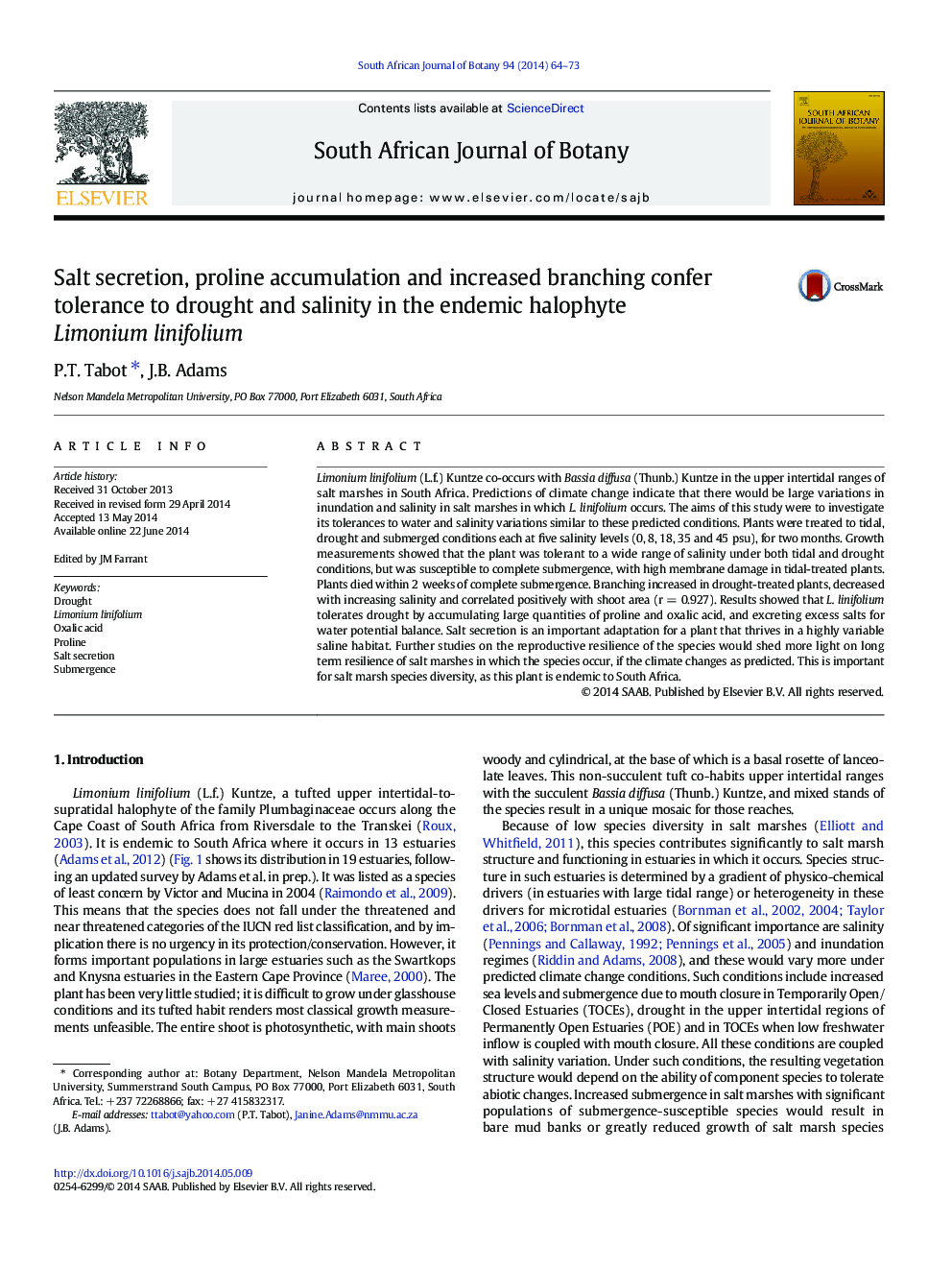| Article ID | Journal | Published Year | Pages | File Type |
|---|---|---|---|---|
| 4520662 | South African Journal of Botany | 2014 | 10 Pages |
•L. linifolium is endemic to salt marshes in South Africa susceptible to climate change effects.•Plants were treated to tidal, drought and submerged conditions each at five salinity levels.•L. linifolium tolerates extreme drought by accumulating proline and oxalic acid.•It excretes excess salts for osmoregulation and increases branching in adapting to drought.•Its susceptibility to submergence especially at low salinity is in part, through membrane damage.
Limonium linifolium (L.f.) Kuntze co-occurs with Bassia diffusa (Thunb.) Kuntze in the upper intertidal ranges of salt marshes in South Africa. Predictions of climate change indicate that there would be large variations in inundation and salinity in salt marshes in which L. linifolium occurs. The aims of this study were to investigate its tolerances to water and salinity variations similar to these predicted conditions. Plants were treated to tidal, drought and submerged conditions each at five salinity levels (0, 8, 18, 35 and 45 psu), for two months. Growth measurements showed that the plant was tolerant to a wide range of salinity under both tidal and drought conditions, but was susceptible to complete submergence, with high membrane damage in tidal-treated plants. Plants died within 2 weeks of complete submergence. Branching increased in drought-treated plants, decreased with increasing salinity and correlated positively with shoot area (r = 0.927). Results showed that L. linifolium tolerates drought by accumulating large quantities of proline and oxalic acid, and excreting excess salts for water potential balance. Salt secretion is an important adaptation for a plant that thrives in a highly variable saline habitat. Further studies on the reproductive resilience of the species would shed more light on long term resilience of salt marshes in which the species occur, if the climate changes as predicted. This is important for salt marsh species diversity, as this plant is endemic to South Africa.
